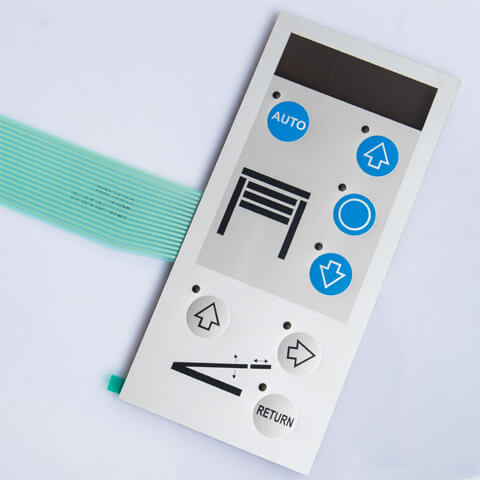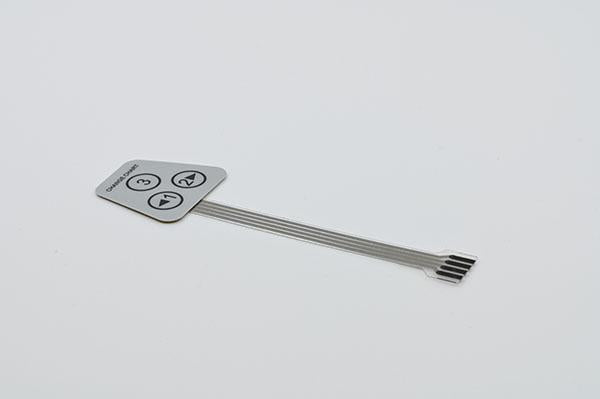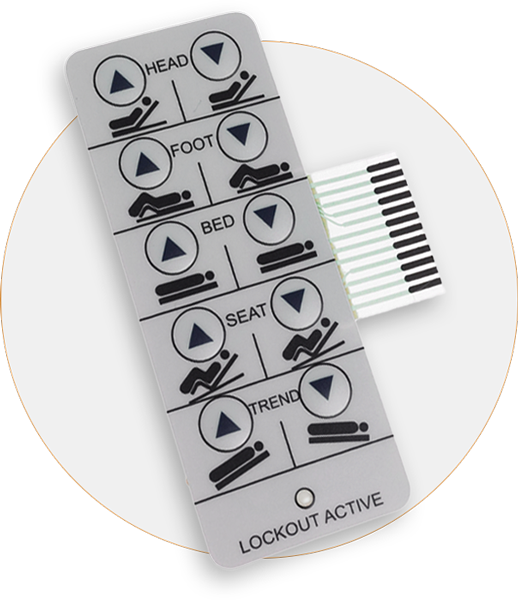The Advancements of Membrane Switch Technology in the Automotive Industry
The Advancements of Membrane Switch Technology in the Automotive Industry
Blog Article
Why Membrane Switches Are Vital for Long Lasting Control Solution
Membrane buttons play a crucial function in guaranteeing the durability and integrity of control systems throughout various sectors. As we explore the multifaceted advantages of membrane layer switches, it becomes obvious that their significance goes beyond mere capability, affecting user experience and operational efficiency.
Introduction of Membrane Layer Buttons
Membrane switches are flexible and reputable elements commonly utilized in different electronic control systems. The graphic overlay provides both functional and visual style, while the spacer layer ensures that the switches are activated just when pressed.
Membrane buttons are typically favored in applications needing a compact and lightweight design, making them excellent for handheld gadgets, clinical tools, and commercial machinery. They can be personalized to fulfill certain customer requirements and can incorporate various features such as backlighting, responsive responses, and several shades. Membrane switches are resistant to dust, wetness, and impurities, making them ideal for settings where resilience is important.
Advantages of Sturdiness
In several applications, the toughness of membrane changes offers significant advantages that boost their general performance and integrity. These buttons are made to hold up against rough settings, making them perfect for use sought after problems such as high humidity, extreme temperature levels, and exposure to chemicals. Their durable building and construction assists to stop damages from physical influence, guaranteeing lasting functionality and minimizing the demand for frequent substitutes.
Furthermore, membrane layer switches are resistant to damage, which is crucial in applications where regular communication happens. This toughness converts to reduce maintenance prices, as companies profit from lowered downtime and fewer solution disturbances. The encapsulated design of membrane switches safeguards internal components from dirt and wetness access, further contributing to their life expectancy (membrane switch).
One more benefit is their ability to maintain constant performance over time. With a high tolerance for mechanical stress, these switches maintain their responsive feedback and electric integrity, guaranteeing user contentment. Ultimately, the resilience of membrane layer switches not only enhances operational efficiency yet likewise fosters self-confidence in their dependability, making them a preferred choice for control systems across numerous industries.
Applications in Various Industries
Sturdy control systems using membrane layer switches locate substantial applications across an array of sectors, each gaining from the special attributes these switches provide. In the medical sector, membrane layer buttons are critical for devices such as individual monitors and analysis devices, where dependability and ease of cleansing are extremely important. Their resistance to moisture and impurities guarantees they keep performance in sterile settings.
The auto market leverages membrane switches for dashboard controls and infotainment systems, where they give streamlined, low-profile user interfaces that improve user experience. These buttons are likewise created to stand up to severe conditions, consisting of exposure to severe temperatures and resonances.
In industrial settings, membrane layer switches are typically utilized in equipment control board, offering tactile feedback and durability needed for high-usage applications. Their ability to withstand chemicals makes them appropriate for try this web-site manufacturing atmospheres where spills and impurities are regular.

Customer electronic devices, such as kitchen appliances and push-button controls, additionally utilize membrane layer switches for their versatility and cost-effectiveness. In general, the visit our website flexibility and durable nature of membrane layer switches over make them essential across different fields, guaranteeing reliable procedure and long life in control systems.
Design and Visual Allure
While capability is paramount, the layout and visual charm of control systems outfitted with membrane buttons play an important duty in user involvement and overall experience (membrane switch). The visual layout of these buttons can significantly influence customer perception and interaction. A well-designed membrane button improves the appearance of the tool, making it more enticing to users and cultivating a link in between the customer and the product
Membrane layer switches offer a lot of versatility in design, allowing makers to personalize graphics, shades, and structures to line up with brand identity and item aesthetics. The use of lively colors and unique patterns can draw attention, while tactile comments can strengthen the user's communication with the gadget. In addition, the ability to integrate LED indications and backlighting right into the membrane layer button style provides both useful and aesthetic benefits, improving presence and use in numerous settings.

Enhancing Individual Experience

Furthermore, membrane layer buttons can be tailored to incorporate visual interfaces, improving use by presenting info in a clear and instinctive way (membrane switch). This personalization can consist of icons, tags, and shade coding that overview users with facility capabilities effortlessly. Furthermore, their versatility enables assimilation in different settings, making certain consistent performance whether in commercial machinery or consumer electronic devices
The durability of membrane switches also plays a crucial function in individual experience. By enduring extreme conditions and extended usage, these buttons lower the chance of system failings, therefore advertising dependability and customer confidence. Inevitably, the calculated use membrane layer changes not just elevates capability yet also considerably improves user interaction with control systems, making them an indispensable element in modern design.
Verdict

Report this page